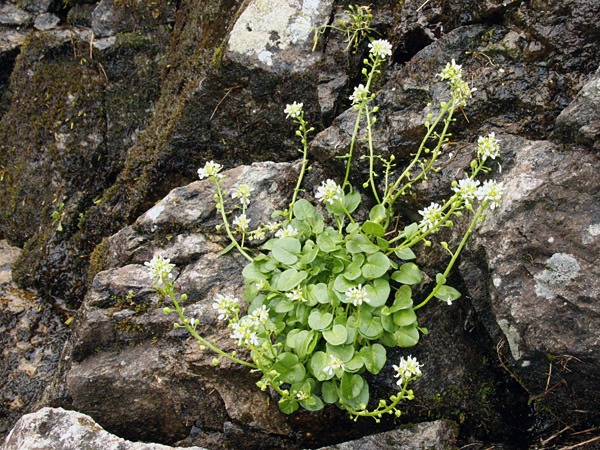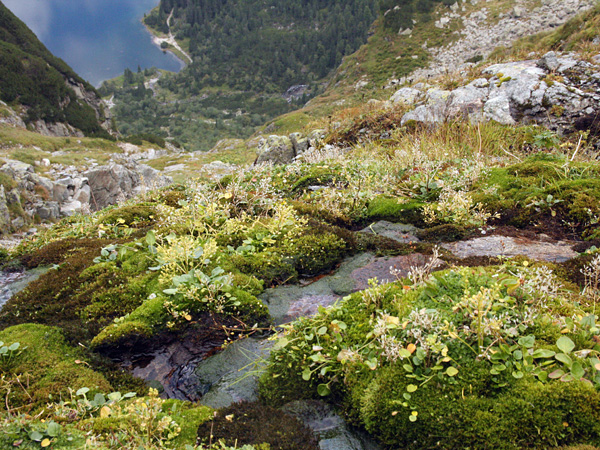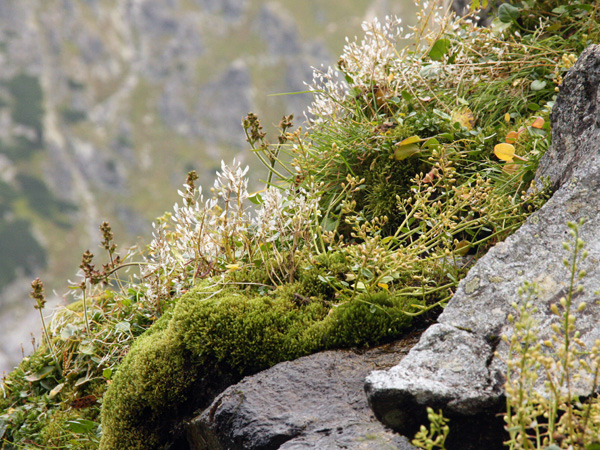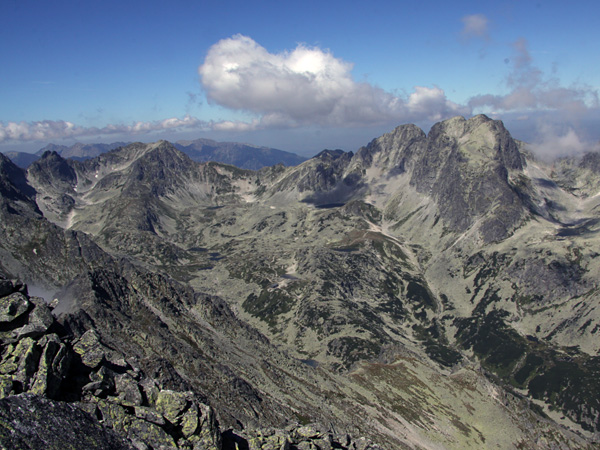Phylogeography of Cochlearia tatrae in the Tatras in the context of local historical and geological conditions – new publication
Studies on the genetic variability of populations of plant species and the history of their contemporary ranges, especially in relation to Quaternary climate changes, are crucial for understanding the biodiversity patterns of Europe's flora. An important group in these studies are endemics – species whose occurrence is limited to specific (usually small) areas. In Central Europe, the most important centres of mountain flora diversity and endemism include the Carpathians, especially their highest massif – the Tatra Mountains.
The latest work of scientists from our Institute presents the results of research on the Tatra scurvy-grass – Cochlearia tatrae Borbás (Brassicaceae). It is one of the representatives of the endemic species of the Tatra Mountains, which was formed as a result of evolutionary processes (hybridization) related to climate change in the Pleistocene. In-depth analyzes of contemporary variability and genetic structure show that despite the small geographical range and occurrence in strictly defined habitat conditions, the Cochlearia tatrae populations represent several genetic groups. The distribution of these populations over several dozen kilometres along the Tatra Mountains and their interrelationships correspond to the basic geographical division into the Western and High Tatras. The currently observed pattern of the genetic structure may reflect the historic isolation of the populations in several micro-refugia on the outskirts of the Tatra Mountains chain during the last glaciation, showing the potential complexity of the history of mountain species ranges, even on such a small geographical scale.
This research (including comparative phylogeography, evolution and genetic variability of the flora of the mountains of Europe, with particular emphasis on the Carpathians) was carried out in the Group of Molecular Biogeography and Systematics IB PAS.
See the original article:
Cieślak E., Cieślak J., Ronikier M. 2021. Phylogeographical structure of a narrow endemic plant in an isolated high-mountain range: the case of Cochlearia tatrae in the Tatra Mts (Western Carpathians). Preslia 93: 125–148. DOI

Cochlearia tatrae.
Photo: E. Cieślak & J. Cieślak.

High-mountain habitat of Cochlearia tatrae.
Photo: E. Cieślak & J. Cieślak.

Cochlearia tatrae.
Photo: E. Cieślak & J. Cieślak.

High Tatras (Staroleśna Valley, Veľká Studená Dolina).
Photo: M. Ronikier.





